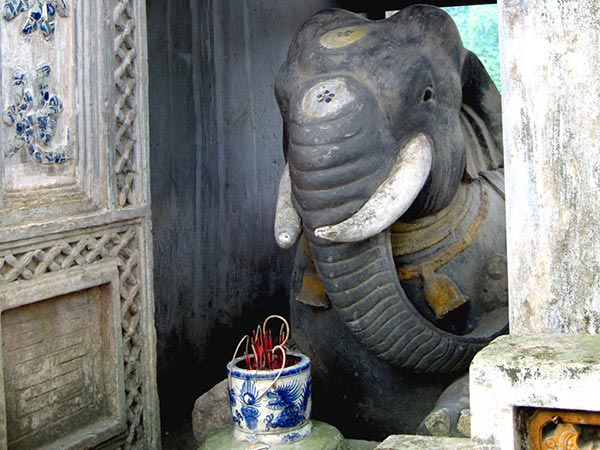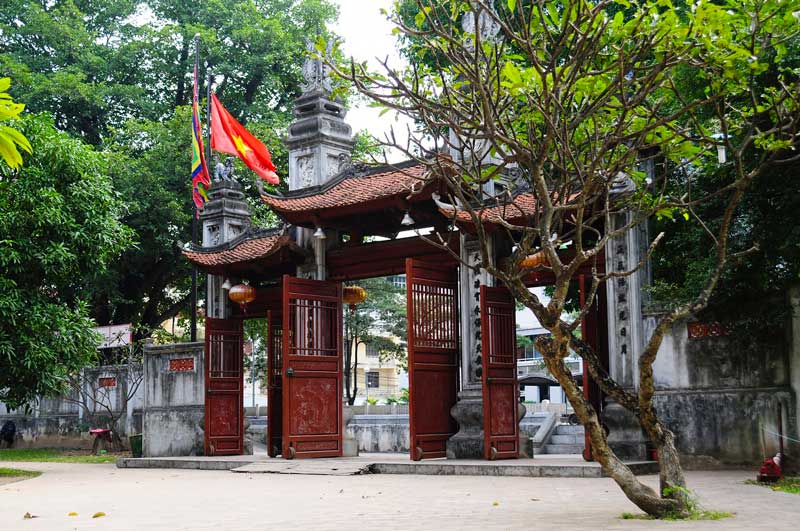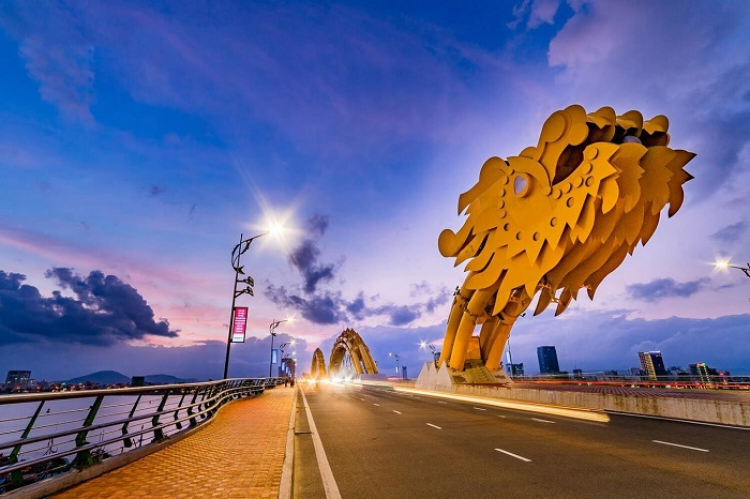Voi Phuc Temple is a hidden gem tucked away in the bustling city of Hanoi, Vietnam. This beautiful temple has been around for centuries and is steeped in history and culture. In this article, 2-vietnam.com will explore the fascinating history, architecture, and must-try experiences at Voi Phuc Temple.
Legend of Voi Phuc Temple
Voi Phuc Temple, according to legend, was built in the 7th year of Chuong Thanh Gia Khanh (1065) during the reign of King Ly Thanh Tong. It is located on a high hill in Thu Le camp, which was one of the 13 villages in the west of Thang Long Citadel, now Hanoi, Vietnam. The Temple also is one of Hanoi’s four sacred Temples
You can read more
- Quan Thanh Temple History
- Kim Lien Temple – One of Hanoi’s Four Sacred Temples
- Bach Ma Temple Legends, and Practical Information 2023
The temple is associated with the story of Linh Lang Dai Vuong, who was believed to be the fourth prince of King Ly Thanh Tong and the son of Hoang consort Nguyen. Linh Lang Dai Vuong, originally named Hoang Chan, was born on December 13, 1064. He was known for his handsome appearance and martial arts skills.
During his time, the Tong invaders joined forces with the Chiem Thanh army to attack Dai Viet (ancient Vietnam). The king sought talented individuals to defend the country, and when the king’s messenger passed through Thi Trai, Prince Hoang Chan requested a red flag, a long spear, and an elephant. The king fulfilled his request and provided over five thousand soldiers. Hoang Chan mounted the elephant and led the soldiers of the king and Thi Trai to confront the enemy.

In the ensuing battle, the enemy forces were overwhelmed by the prince’s troops, and they fled, leaving their weapons behind. Prince Hoang Chan and his armies achieved a great victory. The king was delighted and hosted a banquet to celebrate their success.
After the banquet, the king wanted to abdicate the throne and pass it on to Prince Hoang Chan, but the prince declined. However, shortly after, the prince fell seriously ill. Despite the efforts of the king’s doctor, his condition did not improve, and he eventually passed away.
In honor of Prince Hoang Chan, the king bestowed upon him the title of Linh Lang Dai Vuong and established a temple at Thi Trai, which was later renamed Thu Le. The village inhabitants were exempted from labor and taxes, allowing them to devote themselves to worshipping Linh Lang Dai Vuong.
Throughout history, the temple underwent several renovations and repairs. It was expanded and restored after being destroyed by the French colonialists in 1947. In 2000, further renovations were carried out, focusing on the restoration of Huu Vu’s house and overall architectural enhancements. Voi Phuc Temple was recognized as a historical and cultural relic by the Ministry of Culture, Sports, and Tourism on April 28, 1962.
The Voi Phuc Temple Festival is an annual cultural event attracting participants from regions beyond Thu Le, such as Thuy Khue, Van Phuc, and Bong Lai. The festival takes place on the 9th and 11th of the second lunar month and can last from 3 to 10 days, depending on the contributions of the people. The festival features various customs, including the procession of palanquins.
Voi Phuc Temple holds historical and cultural significance as it represents a sacred site in the western region of the Thang Long Citadel. It has incorporated multiple folk beliefs over time, symbolizing the preservation of national cultural identity.
The Architecture
Voi Phuc Temple has undergone multiple renovations and repairs throughout history, but its architectural style remains true to its traditional Vietnamese temple design. The temple complex is organized into several distinct sections and features ornate structures and decorative elements.
- Entrance Gate: The entrance to Voi Phuc Temple is marked by a gate with two statues of elephants prostrating on both sides. These statues serve as a reminder of the legend of the elephant that fell upon hearing the prince’s battle cry. The gate is adorned with intricate carvings and serves as the entry point to the temple courtyard.
- Courtyard: The temple courtyard is spacious and paved with stone. It has three paths, with the middle path being wider and reserved for special occasions and processions. In the middle of the courtyard, there is a square well that symbolizes gathering water for happiness.
- Main Hall: The main hall of Voi Phuc Temple is the central worship area. It is divided into five compartments and constructed in the shape of the word “Cong.” The structure of the hall is built with stacked bamboo, and the roof is covered with ancient-style curved tiles. The interior of the main hall houses the main altar and statues dedicated to Linh Lang Dai Vuong.

- Harem: Adjacent to the main hall, there is a harem consisting of five compartments. The central compartment is deeper and taller than the others and houses the statue of Linh Lang Dai Vuong. In front of the statue, there is a large stone placed in a glass box, which is believed to be where the god rested his head. Two statues of assistants standing in adoration flank the stone.
- Decorative Elements: Throughout the temple, there are various decorative elements that add to its grandeur. These include diaphragms, couplets, incense sticks, long thrones, bowl-buu hammocks, and gilded sacrifices. These ornate items are often painted in gold, creating a splendid ambiance within the temple.
Over the years, Voi Phuc Temple has been restored and repaired numerous times. The most recent renovations, starting in 2000 and again in 2009, aimed to restore and enhance the overall architecture of the temple, including the rebuilding of Huu Vu’s house.
Visiting hours and Admission fees
Not only on New Year’s Day, most people come to the temple to pray for good luck and peace. Or go sightseeing in the temple, learn about the steles and the couple of elephants in adoration
- Address: No. 306B Kim Ma, Ba Dinh, Hanoi
- Business hours:
| Open time | Closing time | |
| Weekdays | 8 a.m | 5 p.m |
| Holidays | 6 a.m | 8pm |
| Only New Year’s Eve is open all night | ||
- Ticket price: Free









